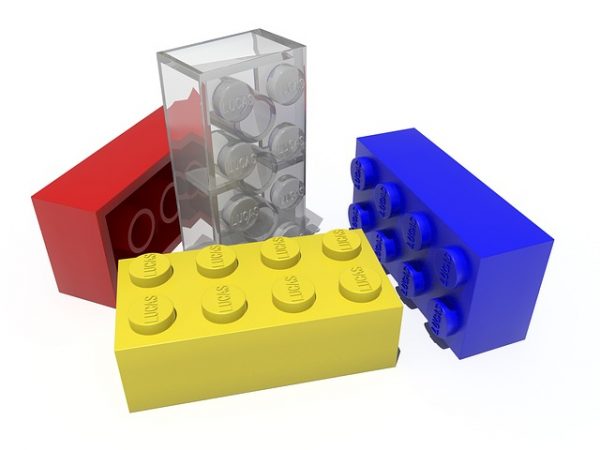
On the hunt for a graduate school resume or CV template? Then look no further! Chances are your graduate school application requires a resume or CV. But good-quality resume and CV templates can be hard to find online. To lend you a hand, we’ve created a handful of unique resume and CV templates you can use for graduate school. And they’re entirely free!
In this article, we’ll start by exploring the differences between graduate school resumes and CVs as well as what the graduate school resume format (and CV format) entails. Then, we’ll give you our four original resume and CV templates. Finally, we’ll leave you with a few ideas on how you can customize your graduate school resume template or CV template for graduate school.
Feature Image: the Italian voice/Flickr, resized from original
Article Navigation
- Resume vs CV: How Do They Differ?
- What Should You Include on Your Resume/CV?
- Free Resume and CV Templates for Graduate School
- How to Customize Our Resume and CV Templates: 4 Tips
- Recap: Resume and CV Templates for Graduate School
Resume vs CV: How Do They Differ?
Is the graduate school resume format all that different from the graduate school CV format? Aren’t the two documents basically the same thing? In short, yes and no.
Similarities-wise, resumes and CVs both summarize academic and professional experiences, accomplishments, and skills. Essentially, the two documents serve the same purpose of securing you a position, whether that be the position of employee or the position of grad student.
That said, there are a few key areas in which the two documents differ significantly:
Quick side note: we've created the world's leading online GRE prep program that adapts to you and your strengths and weaknesses. Not sure what to study? Confused by how to improve your score? We give you minute by minute guide.
You don't NEED a prep program to get a great GRE score. But we believe PrepScholar is the best GRE prep program available right now, especially if you find it hard to organize your study schedule and don't know what to study.
Click here to learn how you can improve your GRE score by 7 points, guaranteed.
- Length: Resumes are succinct and focused, whereas CVs are long and elaborate. Typically, a resume is no more than one or two pages long, but a CV can be however long you need it to be. (Most people use two or more pages.)
- Content: Resumes have a larger emphasis on employment and work-related skills. CVs, on the other hand, focus more on your academic history, experiences, and accomplishments, especially those most relevant to your field of study.
- Usage: Resumes are more commonly used to obtain employment in the public and private sectors (in the U.S.), whereas CVs are more commonly used to obtain employment in the fields of academia or scientific research.
In regard to your graduate school application, are you better off writing a resume or a CV? The answer depends on what you and your program want. Some programs allow applicants to select whichever document they prefer, while other programs are stricter and strongly prefer one document over the other.
In the end, always opt for the document your program either prefers or requires — don’t hand in a well-crafted CV if your program wants resumes!

What Should You Include on Your Resume/CV?
To start, graduate school resumes and CVs should always contain the following features:
- A logical structure. Reverse chronological order (from most recent to earliest) is an ideal arrangement because it highlights what you’re currently doing as well as your most recent experiences and accomplishments.
- Action verbs at the start of each bullet point or description. Generally speaking, it’s best to avoid using first-person pronouns on resumes and CVs, as these can make descriptions needlessly wordy. Instead, begin each bullet point or description with an eye-catching action verb:
- accomplish
- analyze
- coordinate
- deliver
- develop
- direct
- establish
- generate
- implement
- improve
- facilitate
- manage
- organize
- serve
- supervise
But what about the sections? What kinds of headings should you include on your resume/CV? In truth, resumes and CVs overlap significantly in regard to headings and sections. So don’t be surprised if you find a lot of the same information listed for both resumes and CVs!
Graduate School Resume Sections
Your resume should be a concise document focusing primarily on your education and employment history.
Generally, resumes shouldn’t exceed one or two pages; however, some graduate schools aren’t as picky about length. In the end, just make sure your resume abides by your program’s rules and doesn’t exceed any page limits.
Below is a brief overview of the kinds of sections you may include on your resume. For more details on how to structure a graduate school resume, check out our guide on how to write a graduate school resume.
Header
This section goes at the very top of your resume and includes your full name, home address, phone number, and email address. Always emphasize your name in some manner (usually, by increasing its font size and/or bolding it) so admissions committees can quickly note whose resume they’re evaluating.
Additionally, you’ll save space by avoiding superfluous words such as “phone” and “email.” Trust me, it’ll be obvious which ones are which!
Education
Your education section should always come directly after your header. Because you’re applying to graduate school, you’ll want to emphasize your academic history a little more than you normally would on a resume.
For this section, include as many of the following details as possible:
- All universities you attended
- The location (city and state) of each university
- Your degree, including major and minor
- Your (expected) graduation date (month and year)
- The title of your thesis (if applicable)
- The name(s) of your thesis advisor(s)
- Coursework relevant to your field of study
- Non-degree coursework or study abroad programs
- Your cumulative GPA*
- Academic honors, distinctions, and awards (or you may include these in a separate awards section)
*There’s no need to include your cumulative GPA if it’s not that impressive. In this case, either omit the GPA altogether or replace your cumulative GPA with a more impressive variation of your GPA, such as your major GPA. Be sure to note what kind of GPA it is (e.g., “Major GPA: 3.82/4.00”).

Employment
Your work experience will likely be one of the longest sections on your resume. This section should include:
- Full-time jobs, part-time jobs, temporary jobs, and internships
- The titles of your positions
- Company or organization names and locations (city and state)
- The dates (month and year) you worked
- Two to three bullet points for each entry describing your responsibilities, accomplishments, major projects, etc.
Publications
If you’ve authored or coauthored any academic reports, books, chapters, etc., list the works in their own section using your field’s preferred citation style for each entry. Citations should include all authors’ names, the title of the publication, and the year it was published or will be published.
Honors & Awards
Use this section to list academic or professional honors and awards, taking care not to repeat any honors or awards already mentioned in your education section. For each honor, write the name of the honor and the date (month and year) you received it.
Skills & Certifications
This section focuses on any skills or certifications you possess, such as foreign-language abilities, computer skills, teaching certificates, etc. Include the name of each skill or certification. (You may also include the date you became certified, if applicable.)
For foreign-language skills, always indicate what your current proficiency is (e.g., intermediate, business-level, fluent, etc.).
Extracurricular Activities
This optional section focuses on (relevant) extracurricular activities in which you’ve participated or currently participate. You may choose to include this section if you possess any additional experiences relevant to your field of study, or if you’d like to showcase a critical component of who you are.
Include the title of your position or the activity, the location (city and state), and the dates (month and year) you participated. Use bullet points to describe the activities, your duties, etc.

Graduate School CV Sections
The graduate school CV format is fairly similar to the graduate school resume format described above. But because the CV is a lengthier document, you can squeeze in a lot more detail on it than you can a resume — basically, as many sections as you want! (You should also include page numbers for the sake of clarity.)
Want to improve your GRE score by 7 points? We have the industry's leading GRE prep program. Built by world-class instructors with 99th percentile GRE scores, the program learns your strengths and weaknesses through machine learning data science, then customizes your prep program to you so you get the most effective prep possible.
Try our 5-day full access trial for free:
On a CV, prioritize your academic history and any employment, experiences, and accomplishments directly related to your field of study. Try to cut down less relevant jobs and experiences by either completely eliminating them or writing shorter descriptions for them.
Below are some of the major sections you may incorporate into your graduate school CV. For more tips on how to construct a great graduate school CV, refer to our guide.
Header
Your CV should start with a header containing your name, address, phone number, and email address. I recommend emphasizing your name by using all caps or bolding it (or both). In addition, forgo any superfluous words or phrases such as “home address” and “email address.”
Research/Teaching Interests
You may insert a short section (anywhere on the CV is fine but generally at the beginning is best) detailing your research and/or teaching interests. This section serves as a brief overview of your academic interests and future goals.
Keep this section brief — one to three sentences should suffice. And be specific by narrowing down your interests to exact sub-fields, topics, people, eras, etc.
Education
Like the resume, your education section should always come at the beginning of your CV, directly after your header (or it may come slightly later if you decide to insert a “Research/Teaching Interests” section before it).
Include most or all of the following details:
- The name and location (city and state) of each university you attended
- Your degree type, major, and minor
- Your (expected) date of graduation (month and year)
- The title of your thesis (if applicable)
- The name(s) of your thesis advisor(s)
- Courses related to your field of study
- Non-degree coursework or study abroad programs
- Your cumulative GPA*
*Don’t bother including your cumulative GPA if it won’t impress graduate schools. Either delete it or replace it with a higher version of your GPA, such as your major GPA.
Don’t be afraid to get specific in this section. The CV offers an unlimited amount of space, so if you have certain courses, projects, or papers you’d like to highlight, go ahead and do so.

Research/Teaching Experience
Here, you’ll discuss any research or teaching experience you have in your field of study. You may combine this section with your “Employment” section (see following entry).
Generally speaking, those entering scientific fields should focus more on research experience, while those entering humanities fields should focus more on teaching experience.
Include the following details in this section:
- The titles of your positions
- The names and locations of companies, organizations, or institutions at which you researched or taught
- The dates (month and year) you taught or researched
- The names of any advisors or supervisors
- Any specific courses or projects you’d like to highlight
- Bullet points describing your duties, successes, skills, etc.
Research or teaching experience may also include unpaid activities, such as volunteer work, tutoring, extracurricular research projects, internships, etc.
Employment
For the CV, keep the employment section brief by focusing only on your most relevant positions. If you don’t have any work experience in your field, you may list some less relevant positions — just take care to minimize the space you dedicate to these positions.
You may also combine this section with the “Research/Teaching Experience” section, or divide it into specific types of employment.
Any type of work is fair game, including part-time employment, full-time employment, and paid or unpaid internships. For each entry, include the following details:
- The title of your position
- The name of the company or organization
- The location (city and state) of the company or organization
- The dates (month and year) you were employed
- Bullet points describing your duties, achievements, skills, etc.
Publications
Use this section to showcase any academic papers, reports, books, chapters, etc., you’ve contributed to. Instead of just listing the titles of your publications, write each entry as a separate citation and include all authors’ names, the title, and the (pending) publication date.
Be sure you’re using the citation style appropriate for your field.

Honors & Awards
Here, you may list any major awards, honors, or achievements you’ve earned (particularly those most relevant to your field). Include the names of the awards and the dates (month and year) you received them.
Skills & Certifications
For this section, you may list any major skills or certifications you have, such as computer skills, certificates, foreign-language skills, etc. Write the name of each skill or certification and include the date of certification (month and year) if applicable. Don’t forget to indicate your level of proficiency.
Additional Topics
CVs offer a nearly limitless supply of possible sections. Although you may include whatever sections you want on your CV, it’s best to select sections in which you have noteworthy strengths. For an even longer list of potential CV topics, refer to page 2 of this handy PDF created by Rice University.
Other popular choices for CV sections include the following:
- Fellowships & Grants: This section lists any fellowships or grants you’ve received, for what purpose you received them, when you used them, and how much money you received.
- Presentations: For this section, include any major presentations or speeches you’ve given (in your field) as well as when (month and year) and where you gave each presentation (institution, city, and state). Presentations may include presentations of papers or theses.
- Memberships/Affiliations: Here you can list academic, professional, or extracurricular groups of which you’re a current member. Include the name of each group or organization.
- Extracurricular Activities: If there are any additional activities in which you’ve participated that you believe to be relevant to your field, list those here. Include any positions you held, the location (organization, city, and state), and the dates (month and year). Use bullet points to describe your responsibilities and accomplishments.
- Community Service: This section is similar to the “Extracurricular Activities” section. Here, you can discuss any (relevant) volunteer work you’ve done. Include the title of your position, the name of the organization, its location (city and state), and the dates (month and year) you volunteered your services. Use bullet points to describe your duties and achievements.

Want to improve your GRE score by 7+ points?
Check out our best-in-class online GRE prep program. We guarantee your money back if you don't improve your GRE score by 7 points or more.
PrepScholar GRE is entirely online, and it customizes your prep program to your strengths and weaknesses. We also feature 2,000 practice questions, official practice tests, 150 hours of interactive lessons, and 1-on-1 scoring and feedback on your AWA essays.
Check out our 5-day free trial now:
Free Resume and CV Templates for Graduate School
So far, we’ve given you specific tips on what to include on your graduate school resume or CV. Now, let’s begin the process of making one! In this section, we offer you four free resume and CV templates for graduate school. All of our templates are available for download as .docx files to make customization simple, fast, and fun for you.
Once you’ve finished customizing your template (see the following section for tips!), we strongly recommend saving your resume or CV as a PDF. Most graduate programs prefer PDFs over .doc or .docx files because they’re less likely to produce formatting errors.
Resume Templates for Graduate School
CV Templates for Graduate School

How to Customize Our Resume and CV Templates: 4 Tips
Once you’ve chosen a graduate school resume template you like, it’s time to flex your creativity muscles! Remember, your resume or CV should emphasize your personal strengths. Below, we give you four tips on how to customize your graduate school resume template or graduate school CV template.
#1: Delete Irrelevant Sections
Our templates include all of the most common sections and headings used for graduate school resumes and CVs; however, you likely won’t need every section listed.
We recommend you first go about deleting any obviously irrelevant sections. For example, if you’ve never contributed to any publication before, it makes sense to delete the “Publications” section.
On a related note, don’t feel guilty if you’re deleting a lot of the sections we’ve included on our templates. In reality, graduate school applicants can differ significantly in their backgrounds, experiences, and achievements. Remember the goal of a graduate school resume/CV: to play up your personal strengths, whatever they may be!
#2: Insert Relevant Sections
Next, I recommend you insert any relevant sections not included on our templates. These are sections you believe will ultimately enhance the content and flow of your resume/CV. For example, those applying to master’s degree programs in international relations could insert a section centering on their experiences abroad.
As a reminder, the sections on our templates are not an exhaustive list of all possible resume/CV sections. If you have any additional activities, experiences, skills, or accomplishments you can weave together in a unique or clearer way, you’re welcome to add a section and do so.
Just be sure the section you insert either directly relates to your field of study or emphasizes an important part of who you are.

#3: Rearrange Sections to Highlight Your Strengths
Additionally, there’s no need to stick with the order of sections we’ve given you on our templates. In other words, we encourage you to rearrange sections so that they better reflect your experiences and successes.
That said, there are a few sections you’re better off leaving as is:
- Header: Always place your header (with your name and contact information) at the top of your resume/CV. This is not the time to get creative — simplicity and clarity are key to appearing professional.
- Education: Always place your education section at the beginning of your resume/CV directly after your header. The only exception is if you have a “Research/Teaching Interests” section (for a CV), in which case you may place it before your education section.
- Employment: On a resume, always follow your education section with your employment history. On a CV, follow your education section with any research, academic, or professional experiences related to your field of study.
- Less Important Sections: Always place less important or less relevant sections, such as “Skills & Certifications” and “Memberships,” near or at the end of your resume/CV.
#4: Get Creative
Lastly, we want you to have a little fun with our templates! Now, while we don’t recommend adding a bunch of colors or clip art, we do encourage you to consider changing the following:
- Headings: Don’t feel obligated to stick with the headings we’ve given you! You’re allowed to swap these out for any headings you think flow better with the rest of your resume/CV. My only word of caution is to make sure your headings match the content of their sections. For example, if you’ve chosen the heading “Skills” but are also listing certifications, it makes more sense to change the heading to “Skills & Certifications.”
- Fonts: If you’re downright sick of Times New Roman, go ahead and change it! But don’t go overboard. We recommend sticking with simple, professional-looking fonts, such as Calibri, Tahoma, and Arial, and avoiding any fancy or overtly unprofessional fonts, such as Chiller and Comic Sans.
Here’s what we don’t suggest changing on our templates:
- Sizes: Resumes and CVs always look at least a little bit cramped, but this is so you can fit all of the information you need in as little space as possible. Increasing any of the font sizes ultimately increases your risk of running out of space or exceeding your program’s page limit. If you for whatever reason must change a font size, reduce the sizes of the headings and your name only — not the size of the main text!
- Margins: Our margins are your basic one-inch margins and are what most people use for their resumes and CVs. We do not recommend reducing the margins, as doing so can increase your risk of cutting something off should you or the admissions committee print out your resume/CV.

Recap: Resume and CV Templates for Graduate School
Most graduate school applicants will need to submit either a resume or a CV along with their applications. Which one you submit ultimately depends on what your program requires and your own preferences.
Although resumes and CVs are used for similar purposes — to get you the position you want! — the two documents differ in a few key ways. Resumes are more succinct and work-centered, whereas CVs are longer and more academically oriented.
That said, resumes and CVs often include many of the same sections and headings, such as “Education,” “Employment,” “Honors & Awards,” and “Skills & Certifications.” Because CVs are longer, they offer more room for additional sections, such as “Fellowships & Grants,” “Presentations,” and “Memberships.”
To customize your resume or CV template for graduate school, you may delete irrelevant sections and insert any additional sections that either relate to your field of study or illuminate any personal successes you’ve had. You may also rearrange our templates’ sections in order to highlight your strengths.
Additionally, we encourage you to play around with the headings and fonts (though we recommend leaving the font sizes and margins as is).
Even though your resume/CV is just a single part of your graduate school application, it’s important to put in an adequate amount of time and effort in order to make it both professional and unique. After all, a compelling resume/CV can only strengthen your application!
What’s Next?
Need step-by-step help with your graduate school resume or CV? Check out our guides on how to write a graduate school resume and how to write a graduate school CV today!
Looking for samples, instead? Then take a peek at our compilation of graduate school resume and CV samples!
Got questions about graduate school? Read our guides to learn what graduate school really entails and what the basic graduate school application requirements are.
Ready to improve your GRE score by 7 points?
We've written a eBook about the top 5 strategies you must be using to have a shot at improving your GRE score.
Download it for free now:

